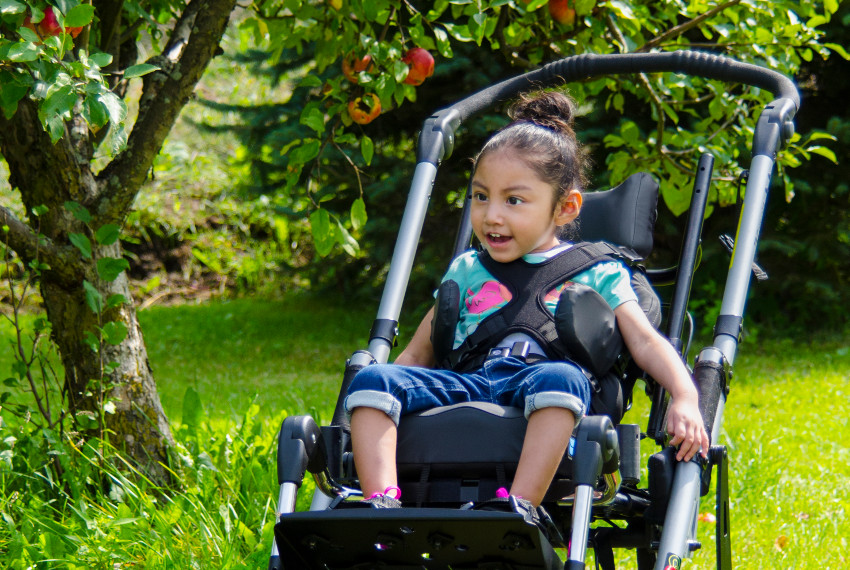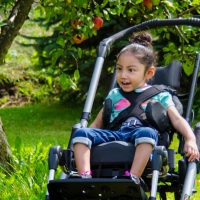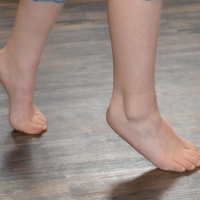It is a big step when a family needs to move forward with getting their child with developmental challenges their first mobility device. Many questions go through their mind: Will it help my child to move better? Will it help us as a family to do more activities together? Will it work for my child and staff at school? What will it look like? Will it somehow keep my child from walking?... and many more questions. When a family comes to Walking and Wheeling for an evaluation of their child’s mobility needs, we answer all of these questions.
In the limited space that we have, this article won’t answer all of these questions, but it will address one of the most significant decisions in selecting the child’s first mobility device: Should we get an adaptive stroller or a wheelchair?
When considering the child’s first mobility device, we have to think about where they will be using it, how it will help them develop, how it will benefit their medical condition and how user friendly it is. It is also important to think about how long will the chair last to grow with my child and the durability of the chair. There are also financial considerations to determine whether medical insurance will pay for it or alternatives for funding will be needed.
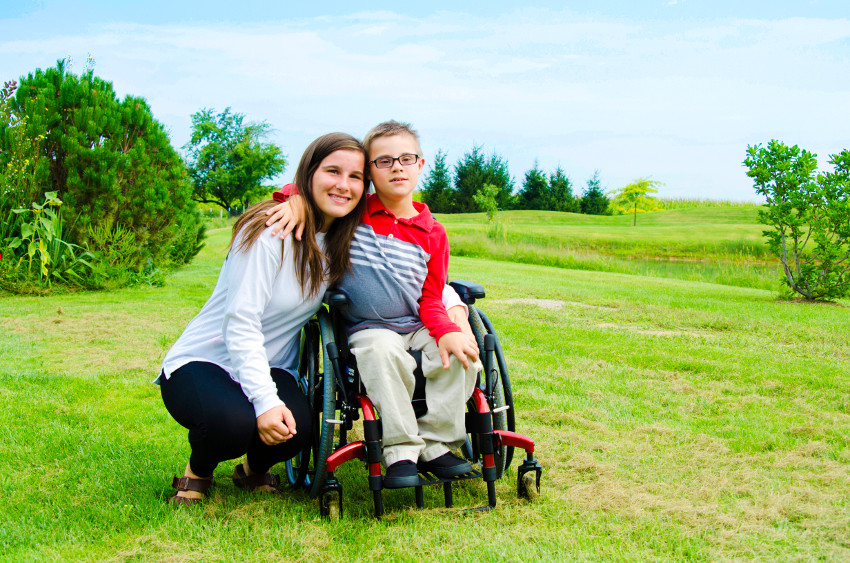
A manual wheelchair for independent mobility.
Most families would prefer their child’s first chair to be an adaptive stroller because it is usually lighter weight, more portable when folded to fit in the car or store in the house, and they are usually more aesthetically appealing. The features that need to be built into the adaptive stroller will be dependent on your child’s physical and medical needs. An adaptive stroller that fits your child well should help her to sit up better, interact with toys, people and there environment. The adaptive stroller will allow the child to move with a caregiver pushing her both indoors and outdoors. The down side to an adaptive stroller over a manual wheelchair is that the child always has to be completely lifted to get into the stroller and taken out. The child most often cannot help with the transfer. In addition, the child cannot participate in moving the chair, but must rely completely on somebody else to move from point A to point B. Lastly, the angle of the seating may or may not be conducive to interacting in the school environment.
At first glance, an adaptive stroller may be more aesthetically pleasing or less of a social stigma, but as time goes on, both adaptive strollers and wheelchairs are becoming more and more attractive. Many people with special needs are becoming more active with a wide variety of choices that engage them in a fun filled functional life!
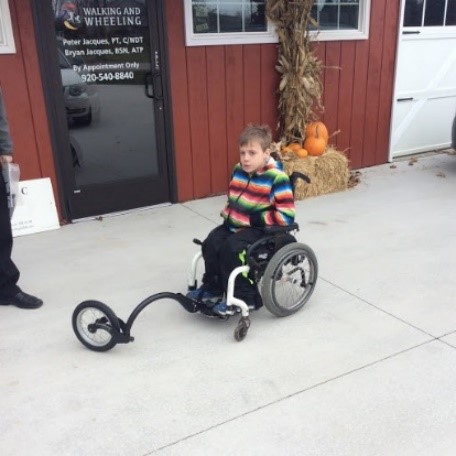
A “Free Wheel” add on to this young man's manual wheelchair.
When looking at the child’s function, medical and academic needs, it may be in their best interest to start with a lightweight manual wheelchair instead of an adaptive stroller as their first chair. A manual wheelchair offers a lot more functional options for many children than an adaptive stroller. If the child has the ability to move the chair with his hands, he can propel himself around when he wants to “get moving”. If the opportunity is there, he may be able to assist with getting into and out of the wheelchair. If your child uses a walker, it is much easier to get into the walker from a manual wheelchair than from an adaptive stroller. Later on, your child may have more mobility options by adding a “Free Wheel” to their manual wheelchair allowing them to move faster out doors on a variety of surfaces or a power assist option to give them powered mobility!
Often times, a family will benefit from having a simple, portable adaptive stroller as a second chair to run errands for the “quick get up and go” times, if the child’s main wheelchair is less of a portable option.
As you can see there are many things to consider in selecting your child’s first mobility device. You will want to see a team of experts who know children, their developmental, functional, and medical needs, as well as all of the best options of seating and mobility devices available!

